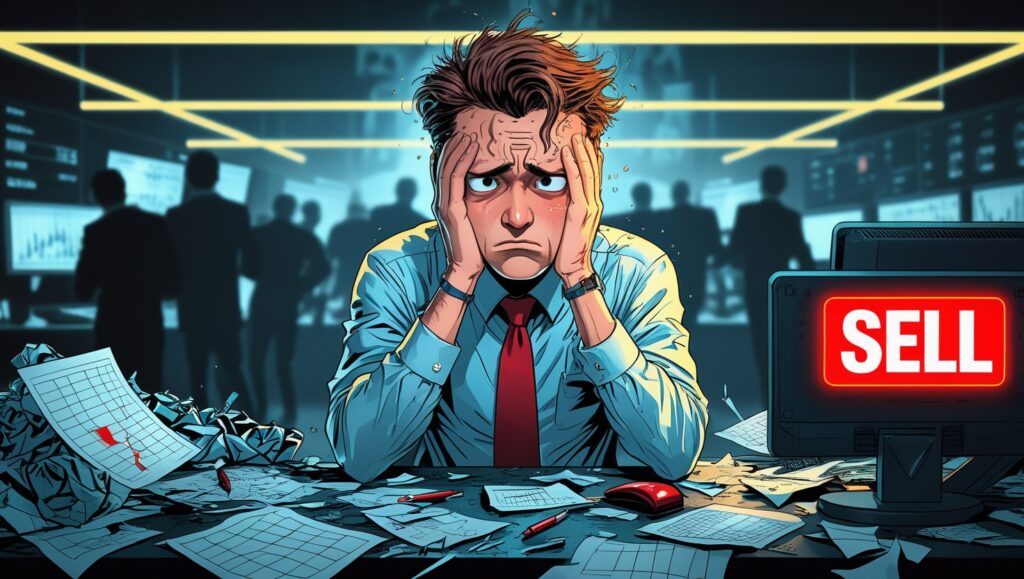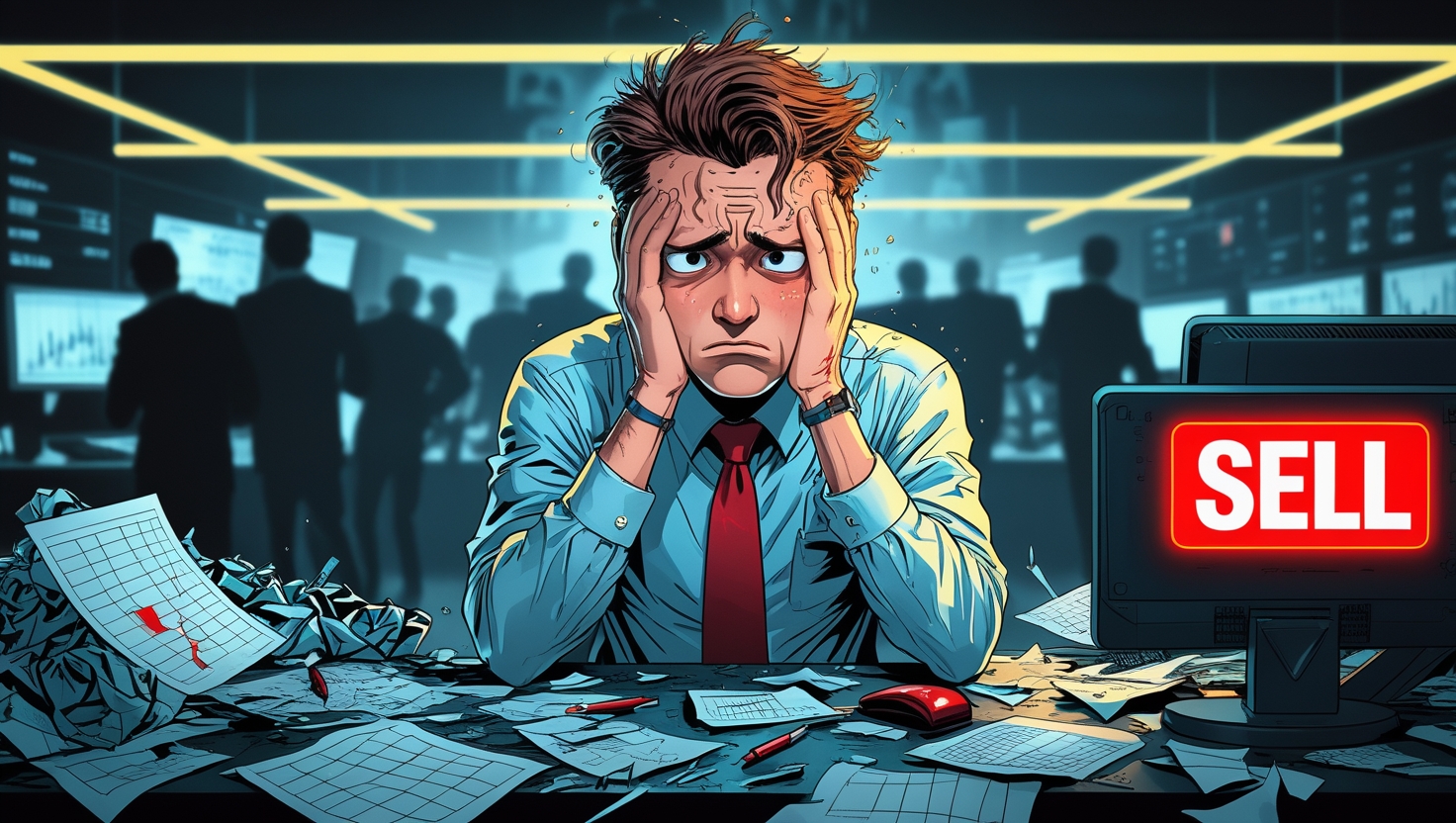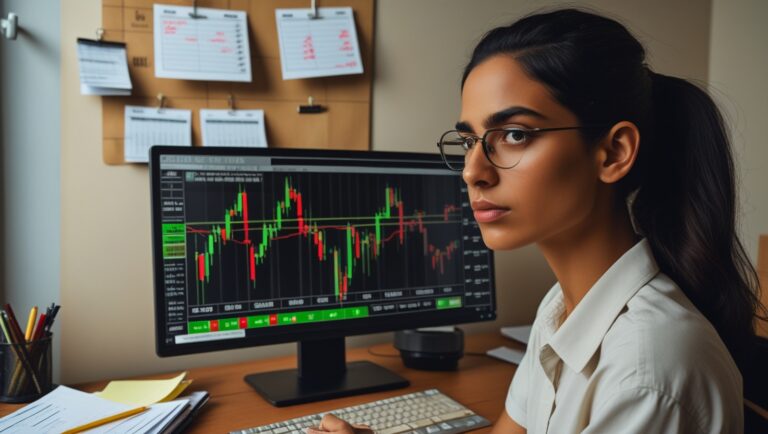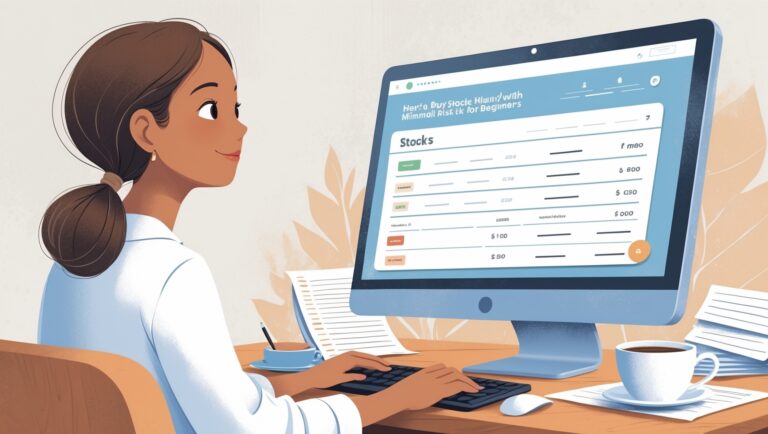Why Most New Traders Lose Money (And How I Stopped the Bleeding)
Why Most New Traders Lose Money (And How I Stopped the Bleeding)
When I first started trading, I thought I had it all figured out. I followed YouTubers, read tweets, joined Discords, and believed I could turn a few hundred bucks into thousands overnight. Instead, I watched my account bleed. Over and over. If you’re wondering why most new traders lose money, I can tell you — I lived it.
It wasn’t until I stopped chasing and started learning what actually matters that things began to turn around for me. That shift is exactly what I explain in my ebook, where I show how I simplified my process, avoided the common traps, and built a real routine that now helps me pay bills consistently with my trading gains.

Table of Contents
The Real Reason New Traders Blow Up Accounts
Most beginners lose money because they focus on the wrong things. I did the same. I thought the more indicators I used, the smarter I’d trade. I thought I needed to be in every hot alert. I thought trading more meant I’d make more. Wrong on all counts.
What I’ve learned is that overtrading, FOMO, and lack of a plan are what wipe out most accounts. People jump into trades because someone on social media said so. They don’t know why they’re entering. They don’t know where to exit. They hold losers, cut winners, and repeat.
Chasing Alerts Almost Destroyed My Confidence
I used to rely on others to tell me what was hot. But I was always late. By the time I bought, the move was already done. I didn’t understand price action or volume, and I definitely didn’t have a system. That’s when I realized: if I kept trading this way, I’d never get consistent — and worse, I’d quit before I had a real shot.
I Built a Simple Process That Works for Me
Once I stepped back and started to study what actually moves stocks, I built a morning routine that changed everything. I look for clean setups. I stick to a focused watchlist. I trade only what I understand — and I don’t let emotions lead the way.
Every day now, I scan for volume, news catalysts, clean charts, and support/resistance. I do it without indicators, and it works. That process is what I break down in my ebook — so you don’t have to lose months (or money) figuring it out the hard way.
Most New Traders Trade Too Much
You don’t need to trade all day. In fact, I only take 2 to 3 trades a week, and that’s enough for me to cover my bills. When I slowed down, I stopped making desperate trades. My wins got bigger, and my losses got smaller.
Risk Management Is the Game-Changer
I used to ignore risk. I’d go all-in, average down, and pray. That mindset drained my account. Now, I use fixed risk per trade, never revenge trade, and walk away when I hit my limit. Trading is a business — and I started treating it like one.
Learning to Say “No” Saved My Account
Some of my best trades were the ones I didn’t take. If a stock doesn’t meet my criteria, I skip it. No FOMO. No regret. That took discipline — but it’s the reason I’ve stayed in the game long enough to actually see progress.
I Focus on Repeatable Setups
Once I found a few setups that worked for me, I stopped trying to trade everything. I look for momentum breakouts, gap-and-go setups, and sector sympathy plays. That’s it. I do them over and over. That’s how I got good.
Your Tools Don’t Have to Be Fancy
I trade using free tools, simple screeners, and a clear checklist. I don’t need a $300 platform to make smart decisions. In my ebook, I even list out the exact tools I use to build my daily watchlist — and how I narrow down to just 6 stocks before 9:30AM.
Journaling Helped Me Grow Fast
When I started writing down every trade — what I saw, why I entered, how it ended — I got better fast. I started spotting patterns. I fixed my bad habits. I built self-awareness, which is the most underrated trading tool of all.
Final Thoughts
Most new traders lose because they’re trying to trade like everyone else. They chase alerts, ignore risk, and lack a system. I know — I was one of them. What saved me was slowing down, building a repeatable routine, and sticking to it.
You don’t need to be perfect — you need to be consistent. And you don’t need to do it alone. If you want a step-by-step breakdown of how I turned my losses around and started using trading to pay real-life bills, grab my ebook here. It’s made for traders like you — and it’s the guide I wish I had when I started.
Another big mistake I made early on was jumping in without knowing the bigger picture. I didn’t check sector news, market conditions, or even the overall sentiment. If the SPY was weak, I’d still try to go long on random stocks. That lack of context cost me real money.
I also didn’t understand volume confirmation. I used to enter setups with no volume behind them. I’ve learned now that volume is what drives price. If I don’t see increased volume at key levels, I stay out. That alone changed my win rate significantly.
I used to think I needed to trade every day to grow fast. But the truth is, some of my biggest wins came from waiting. I stopped forcing trades and learned to wait for the clean, obvious setups. Quality over quantity became my new motto.
Another lesson: I had no exit strategy. I used to get in and then hope. Now, every trade I take has a clear stop and a defined target. I know where I’m wrong before I even enter. That mindset helped me stop bleeding my account.
I also learned that trading without journaling is like flying blind. I now journal every single trade — win or loss. I review them weekly and look for patterns. Over time, I’ve noticed which setups work best for me and which ones I need to avoid completely.
The turning point came when I started treating trading like a discipline and not a game. I began building structure, trusting the process, and cutting distractions. That shift in mindset is what helped me go from emotional reactions to consistent decisions.
I had to unfollow accounts that made me feel like I was behind. Constantly seeing others post gains made me rush trades and feel pressure. Once I focused on my own progress, I grew faster and with more peace.
Another key change: I stopped adding to losers. That bad habit was draining me. Now, I have a strict rule — no averaging down. I’d rather take the small loss and move on than hold a bag that ruins my month.
I also began to use my own trading plan, not someone else’s. What works for another trader might not work for me. I adjusted my style based on what felt natural. That’s why in my ebook, I share my own setups and watchlist methods — not generic strategies you see everywhere.
Risk management became my best friend. I don’t risk more than I’m willing to lose. I trade small but with precision. And over time, small wins compound into big results — especially when you stop leaking money on sloppy trades.
I also now understand the power of sitting on my hands. Some days, the market just isn’t clear. And that’s okay. If I don’t see a clean setup, I don’t trade. Patience is a strategy. Discipline is an edge.
If you’re bleeding your account like I used to, it’s not too late. The fix isn’t more trades or more indicators. The fix is structure, risk management, and consistency. If you want the exact strategy I used to turn it around, grab my ebook here. It’s helped me, and I know it can help you too.

Stay ahead in the stock market! Subscribe to our newsletter and receive exclusive stock flow reports, trading insights, and actionable tips directly in your inbox. Join thousands of traders who get our updates first.








9 Comments